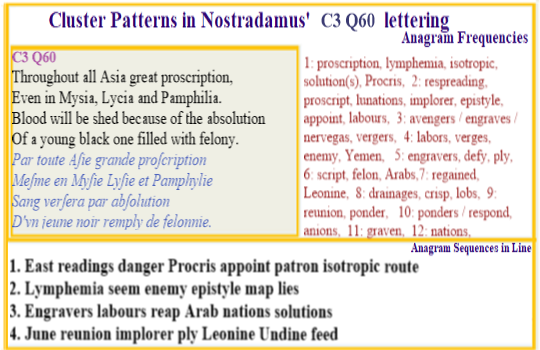 Analyses of all verses
Analyses of all verses
|
 Web Site
Web Site |
 All
Sefirots All
Sefirots |
Nostradamus C3 Q60: A Turkish wife is slain by her husband when she questions his fidelity.
Copyright: Allan Webber, December 2015
 The tale of this Prophecy draws on the Greek myth of
Procris
(
roſcrip)
and Cephalus with the latter being the young black one filled with felony
mentioned in the last line while the blood shed in the third line is that
of Procris as she seeks to prove his innocence.
The tale of this Prophecy draws on the Greek myth of
Procris
(
roſcrip)
and Cephalus with the latter being the young black one filled with felony
mentioned in the last line while the blood shed in the third line is that
of Procris as she seeks to prove his innocence.
The future story therefore involves a question of fidelity felt by a wife before being slain by her husband while seeking for the answer to his behaviour.
Throughout the Prophecies there are a great number of references in the text and anagrams to Greek mythology and there are also a disproportionate number of medical terms for conditions, symptoms, medications and treatments.
Given Nostradamus' known interest in these fields the frequency of these terms give another reason to believe the anagrams are not the product of chance alone. The Greek myths are used by him to transfer a story in compact form from a known tale to one that a future event will mirror while he uses medical markers to clearly identify the people in his stories.
# lymphemia: presence of an unusually large number of the small white cells called lymphocytes in the blood.
# Procris: in Greek mythology wife of Cephalus who kills her in a hunting accident when she follows him to see if he is unfaithful.
# Aegis: ancient Greek protective shield often made of hide on which there is a Gorgons head.
# epistyle: in classical architecture the frame over a door which is often engraved.